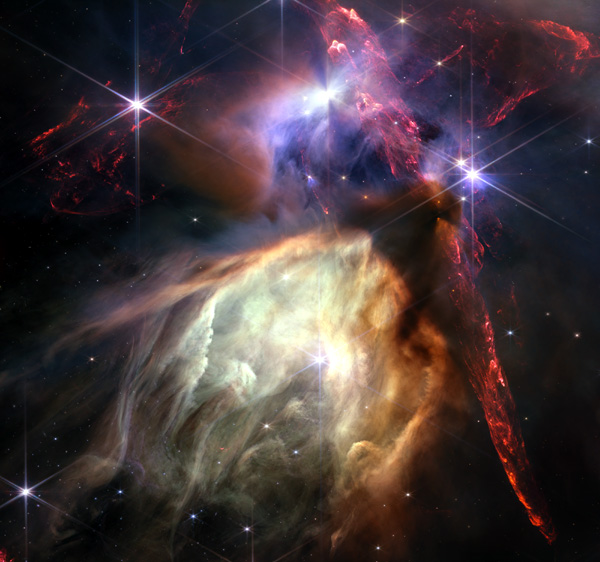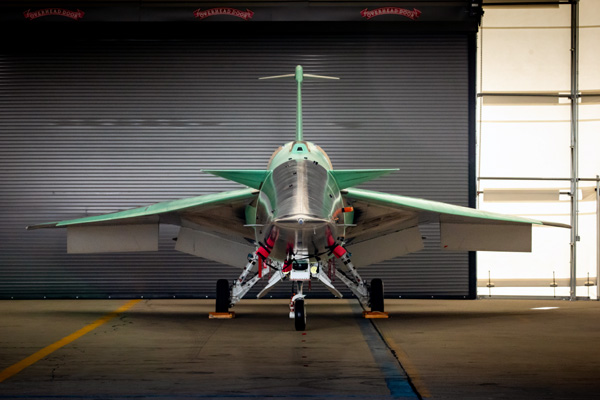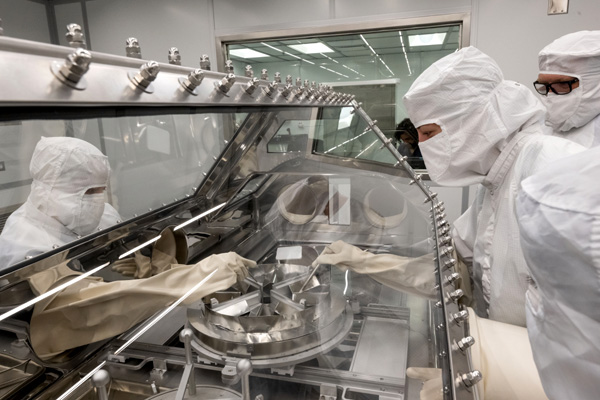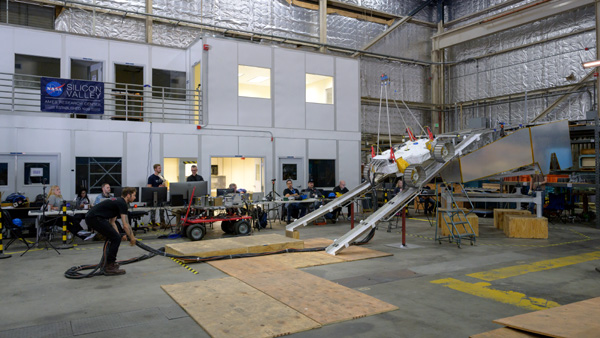 NASA, ESA, CSA, STScI, Klaus Pontoppidan (STScI)
Webb Celebrates First Year of Science With Close-up on Birth of Sun-like Stars (News Release)
NASA, ESA, CSA, STScI, Klaus Pontoppidan (STScI)
Webb Celebrates First Year of Science With Close-up on Birth of Sun-like Stars (News Release)
From our cosmic backyard in the solar system to distant galaxies near the dawn of time, NASA’s
James Webb Space Telescope has delivered on its promise of revealing the universe like never before in its first year of science operations. To celebrate the completion of a successful first year, NASA has released Webb’s image of a small star-forming region in the Rho Ophiuchi cloud complex.
“In just one year, the James Webb Space Telescope has transformed humanity’s view of the cosmos, peering into dust clouds and seeing light from faraway corners of the universe for the very first time. Every new image is a new discovery, empowering scientists around the globe to ask and answer questions they once could never dream of,” said NASA Administrator Bill Nelson. “Webb is an investment in American innovation but also a scientific feat made possible with NASA’s international partners that share a can-do spirit to push the boundaries of what is known to be possible. Thousands of engineers, scientists and leaders poured their life’s passion into this mission, and their efforts will continue to improve our understanding of the origins of the universe – and our place in it.”
The new Webb image released today features the nearest star-forming region to us. Its proximity at 390 light-years allows for a highly-detailed close-up, with no foreground stars in the intervening space.
“On its first anniversary, the James Webb Space Telescope has already delivered upon its promise to unfold the universe, gifting humanity with a breathtaking treasure trove of images and science that will last for decades,” said Nicola Fox, associate administrator of NASA’s Science Mission Directorate in Washington. “An engineering marvel built by the world’s leading scientists and engineers, Webb has given us a more intricate understanding of galaxies, stars and the atmospheres of planets outside of our solar system than ever before, laying the groundwork for NASA to lead the world in a new era of scientific discovery and the search for habitable worlds.”
Webb’s image shows a region containing approximately 50 young stars, all of them similar in mass to the Sun, or smaller. The darkest areas are the densest, where thick dust cocoons still-forming protostars.
Huge bipolar jets of molecular hydrogen, represented in red, dominate the image, appearing horizontally across the upper third and vertically on the right. These occur when a star first bursts through its natal envelope of cosmic dust, shooting out a pair of opposing jets into space like a newborn first stretching her arms out into the world.
In contrast, the star S1 has carved out a glowing cave of dust in the lower half of the image. It is the only star in the image that is significantly more massive than the Sun.
“Webb’s image of Rho Ophiuchi allows us to witness a very brief period in the stellar lifecycle with new clarity. Our own Sun experienced a phase like this, long ago, and now we have the technology to see the beginning of another’s star’s story,” said Klaus Pontoppidan, who served as Webb project scientist at the Space Telescope Science Institute in Baltimore, Maryland, since before the telescope’s launch and through the first year of operations.
Some stars in the image display tell-tale shadows indicating protoplanetary disks – potential future planetary systems in the making.
A Full Year, Across the Full Sky
From its
very first deep field image, unveiled by President Joe Biden, Vice President Kamala Harris and Nelson live at the White House, Webb has delivered on its promise to show us more of the universe than ever before. However, Webb revealed much more than distant galaxies in the early universe.
“The breadth of science Webb is capable of exploring really becomes clear now, when we have a full year’s worth of data from targets across the sky,” said Eric Smith, associate director for research in the Astrophysics Division at NASA Headquarters and Webb program scientist. “Webb’s first year of science has not only taught us new things about our universe, but it has revealed the capabilities of the telescope to be greater than our expectations, meaning future discoveries will be even more amazing.”
The global astronomy community has spent the past year excitedly poring over Webb’s initial public data and getting a feel for how to work with it.
Beyond the stunning infrared images, what really has scientists excited are Webb’s crisp spectra – the detailed information that can be gleaned from light by the telescope’s spectroscopic instruments. Webb’s spectra have confirmed the distances of some of the farthest galaxies ever observed, and have discovered the earliest, most distant supermassive black holes.
They have identified the compositions of planets' atmospheres
(or lack thereof) with more detail than ever before, and have narrowed down what kinds of atmospheres may exist on rocky exoplanets for the first time. They have also revealed the chemical makeup of stellar nurseries and protoplanetary disks, detecting water, organic carbon-containing molecules, and more.
Already, Webb observations have resulted in hundreds of scientific papers answering longstanding questions and raising new ones to address with Webb.
The breadth of Webb science is also apparent in its observations of the region of space we are most familiar with – our own solar system. Faint rings of gas giants appear out of the darkness, dotted by moons, while in the background Webb shows distant galaxies.
By comparing detections of water and other molecules in our solar system with those found in the disks of other, much younger planetary systems, Webb is helping to build up clues about our own origins – how Earth became the ideal place for life as we know it.
"With a year of science under our belts, we know exactly how powerful this telescope is, and have delivered a year of spectacular data and discoveries,” said Webb Senior Project Scientist Jane Rigby of NASA's Goddard Space Flight Center. “We've selected an ambitious set of observations for year two — that builds on everything we've learned so far. Webb's science mission is just getting started — there's so much more to come."
Source: NASA.Gov
****































